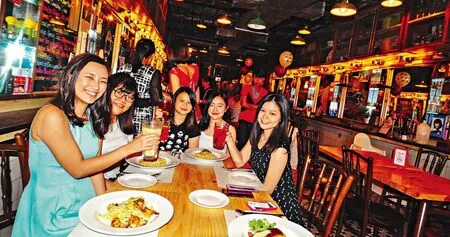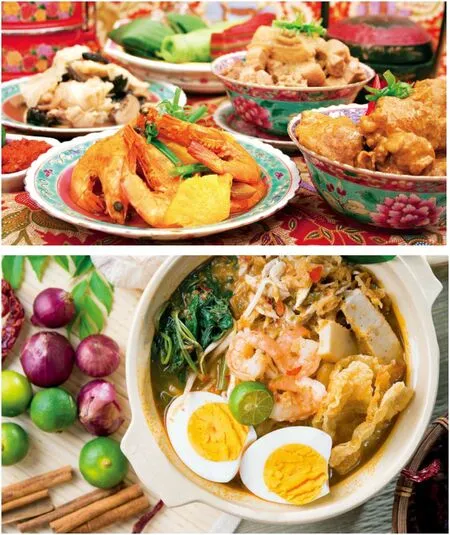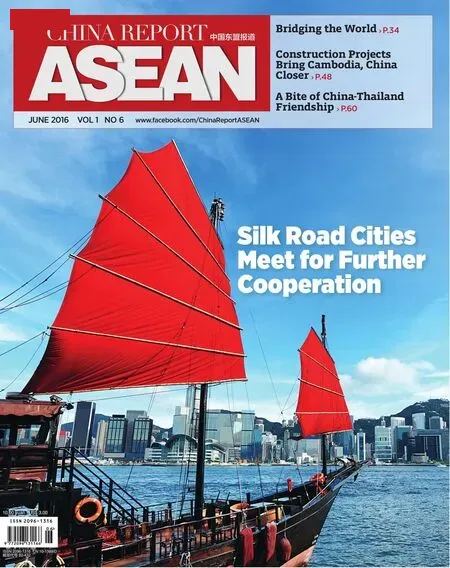Nyonya Dishes: A Unique Fusion of Malaysian and Chinese Cuisine
By Sun Qi
Nyonya Dishes: A Unique Fusion of Malaysian and Chinese Cuisine
By Sun Qi

Nyona cuisine, a unique blend of Chinese and Malaysian flavors, has become an iconic part of Malaysia's diverse culinary scene
Food is central to people's lives in Malaysia. Trying new kinds of food is a kind of hobby for most Malaysians,who enjoy a diet as diverse as the country itself. Delicacies native to Malaysia, as well as Chinese and Indian dishes, are common to all across the country's many islands. Even more unique is a special cuisine—known as Peranakan or Nyonya—that combines Chinese and Malaysian cooking techniques into something all its own.
When attending the China-Malaysia Forum in Kuala Lumpur in November 2015, Chinese Premier Li Keqiang said that Nyonya dishes reflect the deep ties that Malaysia and China share.
Connected Through Food
Malacca, a southern Malaysian province,has a long colonial history and its citizens are accustomed to a diverse diet. Recipes from Portugal, the Netherlands and Britain were introduced through colonization, subtly influencing the local cuisine. Despite never being a colonial power, China's influence on the cuisine of the region has been even more pervasive. Malaysia's significant ethnic Chinese population as well as ties between the two countries that date back centuries have made the Chinese influence onMalaysia's cuisine arguably the most significant.
According to legend, Zheng He,a Chinese explorer and admiral who commanded expeditionary voyages to Southeast Asia during the Ming Dynasty(1368-1644), was among the first Chinese to ever travel to Malaysia, serving as the catalyst for the formation of a new local culture, now known as Nyonya. Descendants of intermarriage between Chinese and Malaysians are known as“Baba” (male) or “Nyonya” (female),which explains the origin of the name of the Nyonya culture. It is said that those of Chinese descent in Malaysia are particularly adept at preparing Nyonya dishes, due to an inherent, instinctive understanding of the nuances of the cuisine.
Nyonya dishes are largely comprised of Malaysian spices and Chinese methods of preparation, reflecting a time when it was difficult to acquire spices from faraway places, giving Nyonya food a particularly unique flavor.
Generations ago, cooking skills in Malaysia tended to be passed down from mother to daughter. Nyonya dishes are a reflection of love between mother and daughter, who would oThen spend hours together preparing and perfecting their food. Today, however, the accessibility of prepared spices and electric mixers has allowed people to save plenty of time and effort.

Nyona dishes typically feature Malaysian ingredients prepared with Chinese cooking methods
Special Flavors
Nyonya dishes, though strong in flavor,are mainly sweet and sour or somewhat spicy. Sauces are often composed of 10 spices or more. Seafood is common, due to Malaysia's proximity to the sea.
One of Nyonya's most famous dishes is Laksa, a spicy noodle soup which typically includes prawns, fish or chicken. Laksa broth is brightly colored and full of flavor, complete with spicy chilies. This “hot, fresh and fragrant” mix of flavors is said to stimulate appetite.
ATher eating, it is commonplace to drink a glass of white pearl barley soup, a fragrant concoction said to carry various health benefits. Desserts, too, are crucial. Many enjoy a bowl of cendol, a rice-flour and coconut-based snack, which can be found across Southeast Asia, as a “perfect end” to the taste of Nyonya dishes.
Families in southwestern China's Sichuan Province—another region renowned for its food—are said to always stock pepper and spices in their home. Similarly, families in Malaysia tend to have spices and sauces for preparing Nyonya dishes on hand at all times. Nyonya chili sauce, known as Sambal Tumis, is the most common condiment used in preparing Nyonya dishes. Malaysians also tend to add some homemade ingredients such as coconut,pepper, citronella, grapefruit, spices and curry powder, which together make up the basic supporting ingredients in any fish, meat or vegetable dish.
Malaysia is rich in countless types of tropical fruits, either seasonal or non-seasonal. The Mangosteen is purple on the outside and is white and juicy inside. Adventurous travelers can try durian, which is known as the king of fruits, with a famously strong flavor and smell.
To truly experience Malaysian food, it's important to visit outdoor food stalls. There,tourists, among locals from all walks of life,can try a variety of local, inexpensive delicacies. Stalls are often equipped with large television screens showing football matches,further attracting customers in a football-crazed nation. Kopitiam coffee shops also offer a unique dining experience, with a variety of snacks and beverages on offer. As any traveler to Malaysia will tell you, the cuisine is diverse, unique and full of wonderful surprises.

